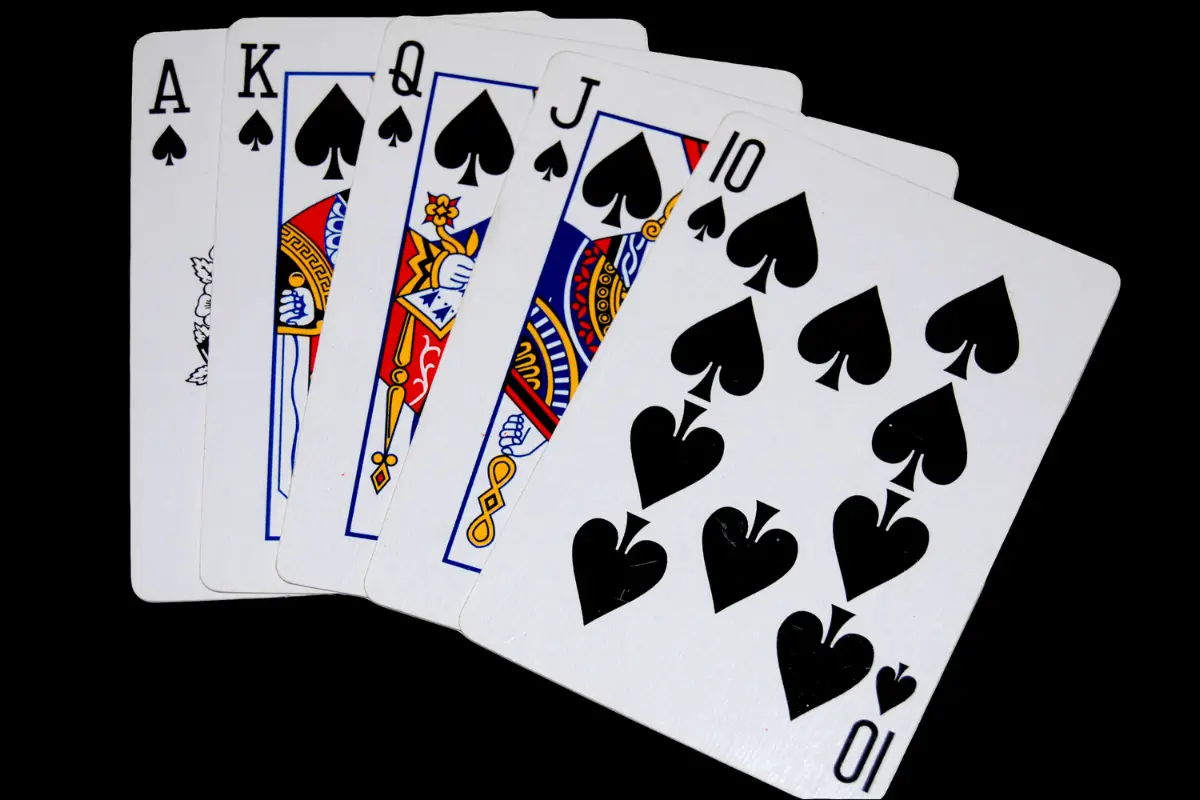Cardistry is an enthralling art form that turns a simple deck of cards into a canvas for creativity. The intricate flourishes, mesmerizing movements, and seamless transitions make cardistry not just a skill but an artistic expression. As a beginner, diving into the world of cardistry may seem daunting, but with the right guidance and consistent practice, anyone can learn and excel. This detailed guide will help you get started, covering everything from basic tools to advanced techniques.
What is Cardistry?
Cardistry, derived from “card” and “artistry,” is the performance art of manipulating playing cards into captivating patterns and movements. Unlike magic, where cards are used for tricks or illusions, cardistry focuses purely on aesthetics and skill. It’s about creating visually stunning sequences that showcase the dexterity of the performer.
The modern form of cardistry gained popularity in the early 2000s, thanks to the widespread availability of online tutorials and the rise of social media platforms like YouTube and Instagram. Today, cardistry has a global fan base, with dedicated conventions, competitions, and communities celebrating this unique art form.
Why Start Cardistry?
Cardistry is more than just a hobby—it’s an avenue for personal growth and creativity. Here are some compelling reasons to start:
- Improves Hand-Eye Coordination: Regular practice strengthens your reflexes and enhances coordination between your eyes and hands.
- Develops Patience and Focus: Mastering cardistry requires perseverance and concentration, which can positively influence other areas of life.
- Offers Artistic Expression: Cardistry allows you to express your personality through custom routines and styles.
- Provides Entertainment: Performing cardistry can captivate an audience, making it a fun skill to share with friends and family.
- Builds Confidence: As you master new moves, your self-confidence grows, motivating you to tackle more challenging techniques.
Tools You Need to Begin Cardistry
Getting started in cardistry doesn’t require expensive tools—just a good deck of cards and some determination. However, the type of deck and other accessories can make a significant difference in your learning experience.
Choosing the Right Deck
- Standard Playing Cards: Begin with affordable yet high-quality decks like Bicycle, Bee, or Tally-Ho. These cards are durable, easy to handle, and widely available.
- Cardistry-Specific Decks: As you advance, explore decks designed specifically for cardistry. These often feature striking designs, soft card stock, and smooth finishes to facilitate complex movements.
Card Mat or Surface
Practicing on a soft surface like a card mat or table cloth can prevent your cards from getting damaged and makes certain moves, like the Ribbon Spread, easier.
Comfortable Practice Area
Choose a quiet, well-lit space with enough room to spread out your cards. A comfortable chair and table setup can make long practice sessions enjoyable.
Mastering the Basics: Beginner-Friendly Moves
As a beginner, it’s crucial to start with simple moves that build your confidence and lay the foundation for more advanced techniques. Here are some beginner-friendly cardistry moves to get you started:
- Thumb Fan: This classic move involves spreading the cards into a circular fan using your thumb. It’s visually appealing and helps improve grip and control.
- Charlier Cut: A one-handed cut where the deck is split into two sections and reassembled with a fluid motion. It’s one of the most fundamental moves in cardistry.
- Ribbon Spread: Spread the cards evenly across a flat surface and flip them into a cascading wave. This move teaches balance and smooth control.
- Deck Flip: Flip the entire deck 360 degrees in your hand. Though simple, this move is a great starting point for learning deck manipulation.
- Swing Cut: A basic two-handed cut where a portion of the deck is swung out and re-stacked in a clean motion. It’s an excellent introduction to packet manipulation.
Practicing Cardistry: Tips for Beginners
Consistent practice is the key to mastering cardistry. Here are some tips to help you practice effectively and make steady progress:
- Start Slow: Focus on learning the mechanics of each move at a slow pace. Speed will come naturally with practice.
- Repeat Regularly: Dedicate at least 15–30 minutes daily to practice. Regular repetition helps build muscle memory.
- Break Down Complex Moves: Divide complicated moves into smaller parts. Master each section before putting them together.
- Use Both Hands: Many cardistry moves require ambidexterity. Practice with both hands to develop symmetry and balance.
- Record Your Progress: Use your phone or camera to record your practice sessions. Watching yourself can help identify areas for improvement.
- Maintain Your Cards: Keep your deck clean and free of bends or tears. Rotate between multiple decks to extend their lifespan.
Common Challenges and How to Overcome Them
Learning cardistry can be challenging, but overcoming these obstacles will make you a better performer.
- Slippery Cards: New decks can be too slick, making them hard to control. Break in the deck by shuffling it repeatedly or using it for light practice.
- Frustration: It’s easy to feel discouraged when moves don’t click immediately. Take breaks, stay patient, and remind yourself that progress takes time.
- Finger Fatigue: Your hands may feel sore after extended practice sessions. Stretch your fingers and take short breaks to prevent strain.
- Dropping Cards: Dropping cards is part of the learning process. Practice over a soft surface to minimize damage and frustration.
Advancing Your Skills: Intermediate and Advanced Techniques
Once you’ve mastered the basics, it’s time to move on to more complex flourishes and routines.
Two-Handed Cuts
Moves like the Sybil Cut involve splitting the deck into multiple packets and rotating them simultaneously for a dynamic display.
Fans and Spreads
Experiment with advanced fan techniques, such as the Giant Fan, to create impressive visual effects.
Packet Manipulations
Work on moves that involve breaking the deck into smaller packets and performing intricate flips, rotations, and re-stacks.
Aerial Moves
Advanced cardistry often includes aerial moves where cards are tossed and caught mid-air. These require precision and confidence.
Joining the Cardistry Community
Engaging with other cardistry enthusiasts can provide inspiration, support, and valuable learning opportunities. Here’s how you can connect with the community:
- Online Tutorials: Platforms like YouTube offer countless free tutorials for beginners and advanced cardists. Channels like Fontaine Cards and School of Cardistry are great starting points.
- Social Media Groups: Join cardistry communities on Instagram, TikTok, and Facebook to share your progress, discover new moves, and find inspiration.
- Competitions and Challenges: Participate in online or local cardistry competitions to test your skills and gain recognition.
- Cardistry Conventions: Events like Cardistry-Con bring enthusiasts together to celebrate the art form, learn from professionals, and showcase their skills.
Developing Your Unique Style
Cardistry is as much about creativity as it is about technical skill. Developing your personal style can set you apart as a performer. Here’s how to cultivate your uniqueness
- Experiment with combining different flourishes to create unique routines.
- Use decks with patterns that enhance the visual impact of your moves.
- Focus on making your transitions between moves seamless and fluid.
- Vary the speed of your movements to add drama and flair.
Staying Motivated on Your Cardistry Journey
Keeping up with cardistry can sometimes feel overwhelming, especially as you tackle advanced techniques. Here are tips to stay motivated:
- Challenge yourself to master one new move each week.
- Reward yourself for completing challenging routines or achieving significant progress.
- Follow professional cardists to stay inspired and learn new techniques.
- Post videos of your performances online to gain feedback and encouragement.
Final Thoughts: Start Your Cardistry Journey Today
Cardistry is a mesmerizing blend of skill, art, and creativity. Whether you’re aiming to master intricate moves or simply want a fun way to express yourself, the journey begins with a single deck of cards. Equip yourself with the right tools, master the basics, and immerse yourself in the cardistry community. Remember, every expert was once a beginner. Start today, and soon you’ll be dazzling others with your cardistry prowess!

